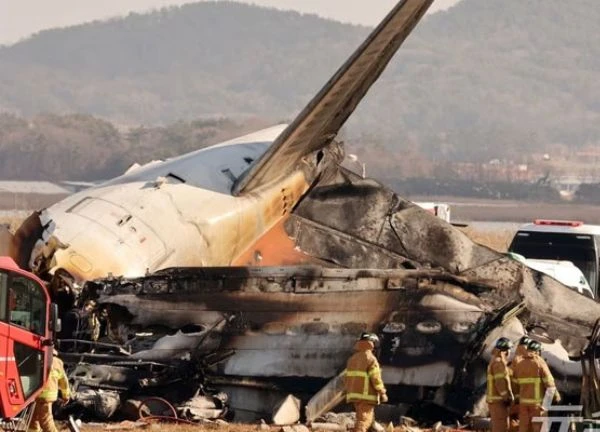Plane tragedy with 179 dead: South Korea declares national mourning, Jeju Air makes commitment

1 | 1 Discuss | Share
After the tragedy, experts suspected that a collision with a bird was one of the causes of the accident. This raised concerns about the effectiveness of bird control activities.
According to the South China Morning Post, at the time of the accident, only one member of the Bird Alert Team (BAT), commonly known as the “Batman†team, was on duty. This has raised questions about whether the qualifications and operating procedures of these personnel are up to standard and effective.
The Hankook Ilbo newspaper also reported that only one BAT employee was on duty at the time of the accident, between 8:57 a.m. and 8:59 a.m. This contradicts earlier statements by the South Korean government's Central Disaster and Safety Countermeasures Headquarters, which said two BAT employees were on duty that day.
The difference may stem from the airport’s staffing structure. Muan International Airport’s BAT team operates with a team of four members, divided into two shifts: two working during the day (9am to 6pm) and one at night (6pm to 9am).
As the incident occurred during a shift change, the only staff on duty may have been delayed in responding to the situation due to shift change procedures. An airport official confirmed that only one BAT member was present at the time of the accident.
Notably, Muan International Airport's bird-watching team is smaller than that of similar-sized airports. For example, Cheongju and Daegu airports, two major airports in central and southeastern Korea, each have eight BAT members, double the number at Muan.
Of the 14 airports managed by the Korea Airport Corporation (excluding Incheon International Airport), only four are short of BAT staff compared to Muan, including Yangyang, the only airport without international flights. Notably, despite the fact that the number of aircraft-bird strikes nationwide increased from 91 in 2019 to 130 in 2023, Muan International Airport is still not on the list of airports with additional BAT staff.
Korea Airport Corporation plans to deploy 43 more BAT staff at seven airports by mid-2024, and Muan is not included in this plan, as the frequency of bird strikes here is quite low - only about 10 incidents from 2019 to August 2024.
However, Muan has the highest rate of bird strikes in the country, with 0.09% of the 11,004 flights during this period experiencing incidents. The recent accident once again confirms that bird strikes can have serious consequences.
Many domestic airports are located near migratory bird habitats, making control of the animals a challenge. Experts recommend that, in addition to increasing the number of BAT staff, investment in advanced technology such as radar systems to proactively detect and respond to bird activity is needed.
"This accident highlights the urgent need to strengthen bird control teams. We should also consider adopting radar systems to proactively detect birds, which will help reduce the risk of similar incidents," said a researcher involved in national aviation projects.
As reported, on the morning of December 29, a Jeju Air Boeing 737-800 crashed at Muan International Airport, killing 179 of the 181 people on board. Most of the victims were South Koreans, returning home from a Christmas holiday in Thailand.
It was the worst air disaster in South Korea's history and the deadliest in the world since the crash of Lion Air Flight 610 in 2018, when all 189 people on board were killed.
Korean Airplane Crash: Damaged "Black Box" Impedes Investigation, New Evidence Appears  Hướng Dương17:20:43 31/12/2024The Jeju Air plane crash in South Korea has seen a new development, with a key part of the flight data recorder (FDR) missing. This could slow down the investigation.
Hướng Dương17:20:43 31/12/2024The Jeju Air plane crash in South Korea has seen a new development, with a key part of the flight data recorder (FDR) missing. This could slow down the investigation.

1 | 1 Discuss | Share

2 | 1 Discuss | Share

3 | 1 Discuss | Share

2 | 0 Discuss | Share

4 | 1 Discuss | Share

2 | 1 Discuss | Share

4 | 1 Discuss | Share

3 | 0 Discuss | Share

4 | 0 Discuss | Share

3 | 0 Discuss | Share

3 | 0 Discuss | Share




2 | 0 Discuss | Report